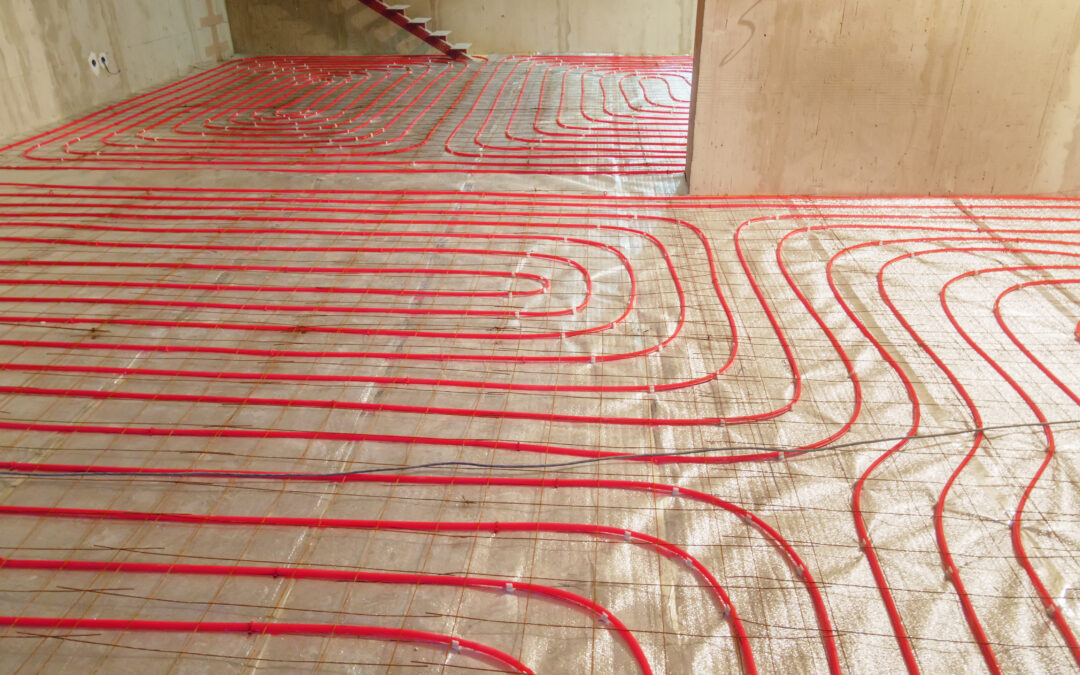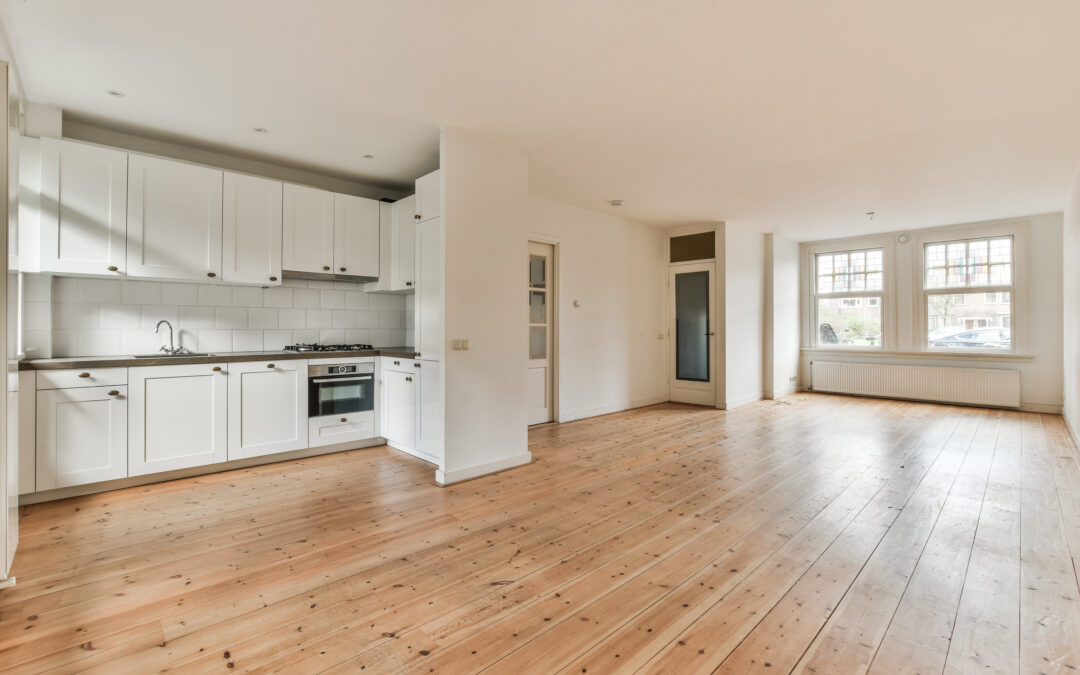Updated 13/11/23
Buying new flooring is exciting. After all, the old flooring looks dingy and damaged, so it was time to make the investment in new flooring. You may also be doing a larger renovation project on your home, and the flooring is a part of that!
No matter what, a new flooring project can be challenging. It’s important to spend time preparing for the flooring installation before you install it. Properly preparing for the floor installation ensures that you’re ready for the installation crew, and your new flooring will have a space ready to receive it.
We’ve put together some steps to take to prepare your home for the day of flooring installation. Let’s get started!
1. Ensure All Renovation Work is Done
If your new floors are part of a renovation project, it’s crucial to ensure that all home renovation projects are done before installing the new flooring.
This includes repairs, painting, and more. Installing the new flooring should be the last step in your home renovation project.
2. Remove All Breakables
You may have already done this for a renovation project, but if not, now is the time to remove all breakables from the room. This means home décor and furniture, light fixtures, and other breakables.
This step should be done before the flooring installers arrive. Remove all artwork, mirrors, and family photos hung on the wall. Take down window treatments, such as drapes and blinds, too.
When you’re finished, look around the room and make sure that everything breakable has been removed to a safer place.
3. Determine Who Removes the Furniture, Appliances & Repairs/Adds Subflooring
When you’ve arranged the installation estimate with the flooring installer, that’s the right time to ask for an all-inclusive project quote. The all-inclusive quote means the price of the installation also includes additional services, such as moving heavy/large furniture and appliances.
It may also add on other services such as subfloor repair and installation or complete removal and replacement of the subfloor if necessary.
You want to avoid being left with heavy furniture and appliances to move on flooring installation day. It’s best to arrange help in advance, so you can have all this done if you’re responsible for moving furniture and appliances yourself.
4. Disconnect Gas Appliances and Electronics
Make sure to disconnect gas appliances and electronics in the room(s) where the flooring will be installed. This includes the laundry room, kitchen, and others.
This is usually a DIY step; however, if you’re not sure how to disconnect the gas and electronics safely, you may need to hire a professional for assistance.
5. Determine New Floor Height
Before installation starts, verify the new floor height. If there’s a change in height to the flooring, you may need to adjust the doors in the room. The problem is that your new flooring could keep the doors from opening and closing correctly.
It’s possible to trim doors so they work with the new flooring. If you’re not sure how to do this or don’t have the right tools, you may need to hire a carpenter to help with this step. However, it’s a good idea to check with the flooring installer first. Some installers will take care of ensuring the doors open and close properly with the new flooring.
6. Create a Designated Work Zone
Most flooring installers need a designated workspace to prepare and store materials outside of where the new flooring will be installed. It’s best to choose and clear out a space the day before the flooring installation. This way, you can ensure seamless work and less downtime.
If you have the space, your garage could also make an excellent work area, though your driveway (if empty) could also make a great workspace. The flooring installers will need enough space to resize materials and keep their tools outside the new floor’s room.
7. Clear the Area
Once all preparations are ready, it’s a good idea to focus on preparing the area where the new floors will be installed. Preparing for floor installations includes the following:
- Make prior arrangements to move all furniture, including oversize items such as pool tables, grand pianos, and exercise equipment.
- Clean existing floors of lingering allergens
- Cover other items throughout your home that you want to keep clean and unharmed
- Clean the closets out
- Two more steps include two we’ve already covered: remove all breakables and disconnect the gas and electricity.
8. Ventilate with Fresh Air
Ventilating the room with fresh air may not make much sense; however, this is also an essential step in preparing for installation day.
It’s recommended that you keep the installation area well-ventilated with fresh air during the installation process and for at least 72 hours afterward. You can turn on fans, open windows, and bring additional heavy-duty fans into the space if necessary.
9. Keep Kids and Pets Safe
The flooring installation room and work zone need to be free of kids and pets. Flooring installation requires heavy-duty materials and tools that could be dangerous around kids and pets.
If you can’t keep your kids and pets at home safely, it’s a good idea to arrange childcare and pet care as needed for the day your flooring is installed.
10. Provide Dust Control
Dust can be a problem during new floor installations, especially if unfinished hardwood floors are installed. Dust can be caused by sanding, carpet fibres, and more.
To control dust, seal off any rooms that could be affected by the flooring installation. In some cases, it may be necessary to cover doorways with plastic sheets and seal them with tape. This may be especially necessary if anyone in your home has major allergies and asthma.
11. Communicate with Installers
One of the best ways to ensure a successful flooring installation is to keep communications open with the installers.
If you have questions or requests, be sure to let them know when they arrive at your home and before they begin the install. Remember that the installers are experts, so they don’t mind questions before, during, and after your new floors are installed.
Summing It Up
Preparation is the key to a successful flooring installation. Follow the tips in our article to ensure you and your home are prepared as well as possible. No matter what type of flooring you’ve chosen, these tips will ensure the space is ready for your flooring installers!
FAQs
Can I leave my furniture in the room during installation?
It’s advisable to remove furniture from the installation area for a smoother process and to prevent accidental damage.
How long does the flooring installation process take?
The duration varies based on factors like the type of flooring and the size of the area. Discuss timelines with your installer for a clear understanding.
Is it necessary to hire professionals for old flooring removal?
While some may choose DIY methods, professionals ensure efficient and proper removal, especially for challenging materials.
What happens if I don’t acclimate the flooring materials?
Failure to acclimate can lead to issues like warping or buckling post-installation. Follow manufacturer recommendations for the best results.
Can I stay in my home during the installation?
Staying in your home during installation is possible, but it’s crucial to coordinate with installers for a smooth and safe process.
How do I clean and maintain my new flooring?
Ask your installer for specific cleaning and maintenance guidelines tailored to your flooring type.



